Advertisements
Advertisements
प्रश्न
In ∆ABC, B - D - C and BD = 7, BC = 20 then find following ratio.
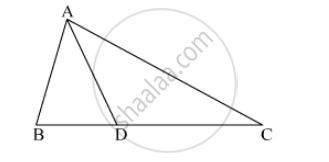
उत्तर
Construction: Draw a perpendicular from vertex A to line BC.
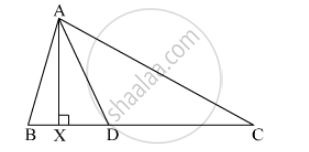
BC = BD + DC ...[B - D - C]
DC = BC − BD
DC = 20 − 7
DC = 13
Ratio of areas of two triangles is equal to the ratio of the products of their bases and corresponding heights.
∴
∴
∴
संबंधित प्रश्न
The ratio of the areas of two triangles with the common base is 14 : 9. Height of the larger triangle is 7 cm, then find the corresponding height of the smaller triangle.
In the following figure RP: PK= 3:2, then find the value of A(ΔTRP):A(ΔTPK).

In the given figure, AD is the bisector of the exterior ∠A of ∆ABC. Seg AD intersects the side BC produced in D. Prove that :
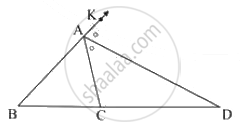
Base of a triangle is 9 and height is 5. Base of another triangle is 10 and height is 6. Find the ratio of areas of these triangles.
In the given figure, BC ⊥ AB, AD ⊥ AB, BC = 4, AD = 8, then find
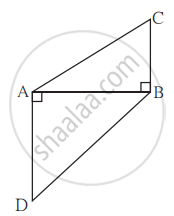
In trapezium ABCD, side AB || side DC, diagonals AC and BD intersect in point O. If AB = 20, DC = 6, OB = 15 then Find OD.
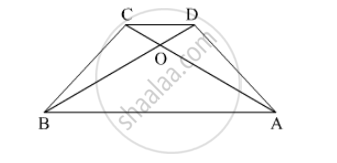
In the given figure, ∠ABC = ∠DCB = 90° AB = 6, DC = 8 then
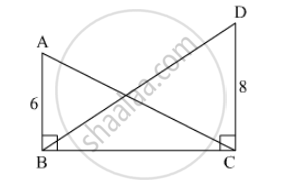
The ratio of the areas of two triangles with the common base is 4 : 3. Height of the larger triangle is 2 cm, then find the corresponding height of the smaller triangle.
In ∆ABC, B – D – C and BD = 7, BC = 20 then Find following ratio.

In the given, seg BE ⊥ seg AB and seg BA ⊥ seg AD.
if BE = 6 and AD = 9 find
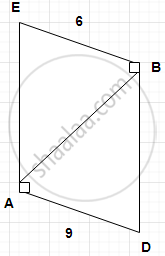
In fig., TP = 10 cm, PS = 6 cm. 
Ratio of corresponding sides of two similar triangles is 4:7, then find the ratio of their areas = ?
In fig. BD = 8, BC = 12, B-D-C, then 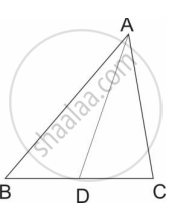
From adjoining figure, ∠ABC = 90°, ∠DCB = 90°, AB = 6, DC = 8, then

In ΔABC, B − D − C and BD = 7, BC = 20, then find the following ratio.
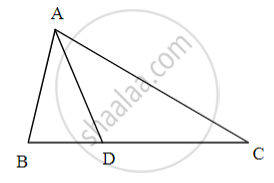
(i)
(ii)
(iii)
Prove that, The areas of two triangles with the same height are in proportion to their corresponding bases. To prove this theorem start as follows:
- Draw two triangles, give the names of all points, and show heights.
- Write 'Given' and 'To prove' from the figure drawn.
If ΔABC ∼ ΔDEF, length of side AB is 9 cm and length of side DE is 12 cm, then find the ratio of their corresponding areas.
In the figure, PQ ⊥ BC, AD ⊥ BC. To find the ratio of A(ΔPQB) and A(ΔPBC), complete the following activity.
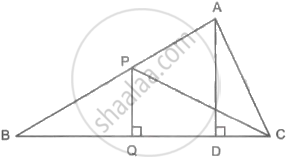
Given: PQ ⊥ BC, AD ⊥ BC
Now, A(ΔPQB) =
A(ΔPBC) =
Therefore,
=
